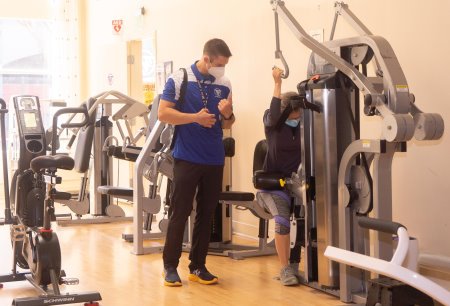By Tom Kelso
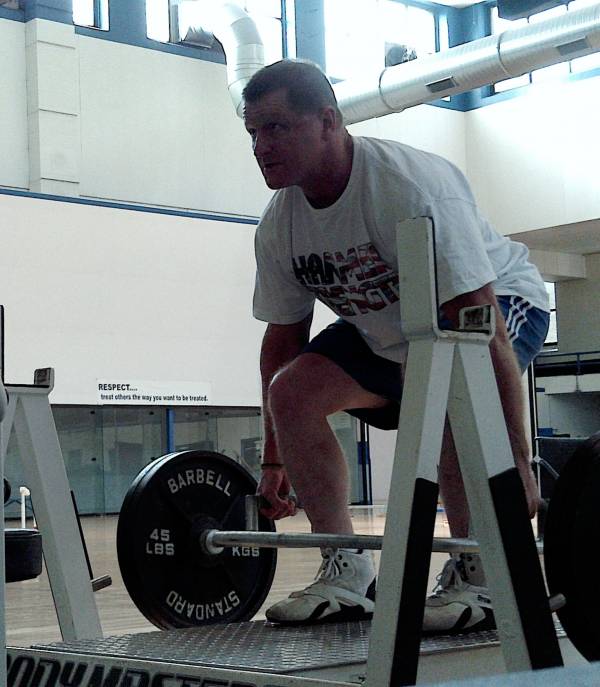
1. Be compliant and work hard.
Provided the ―X‘s and ―O‘s are in place, simply making a concerted effort to ―do something, do it on a regular schedule, and do it as hard as you can at the time will go a long way to maximizing your potential. It‘s 80% of the battle and the first requisite if anything is to be gained. Yes, there are specifics (type of exercises, number of reps, rep speed, weight loads, nutritional intake, etc.), but they are secondary to showing up and exuding effort as there are literally numerous ways to train.
2. Train with intensity (of effort).
Relative to the hard work aspect of point number one, its strength training! You‘re trying to create overload in the muscles, and proper overload means forcing the muscles to work beyond their existing capacity. This is not easy and manifests itself in temporary pain, discomfort, heavy breathing, light-headedness, etc. due to the intense effort put forth. High reps, low reps, dumbbells, machines, one set or 3 sets, somewhere in the endeavor a high degree of effort must be expended so the recruited muscle fibers adapt and improve their quality if maximum gains are to be obtained.
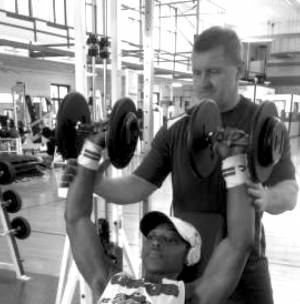
3. Be safe.
The manner by which you train is a controllable variable in your long-term health and well-being. Exercise stresses the muscles, joints, and energy systems to create a positive adaptation to these stresses. Using proper exercise form is mandatory if one desires to train over the long-term. Proper body alignment / posture and controlled speed of movement through a safe range of motion makes the exercise safe not only during individual training sessions, but over all sessions year after year. The whole bouncing, yanking, and ballistic / explosive lifting debate ends abruptly here. Likewise, training loads, session volume, and number of training session per period need to fit so they do not over-stress and lead to chronic injuries and regression.
4. Use basic exercise movements.
One does not need to perform any complicated exercises nor a multitude of any exercise each and every workout. The ―Big Four can go a long way for the upper body: a chest push, a seated / bent-over row, an overhead push, and a pull down / pull up. Throw in another pushing and pulling angle (i.e., incline press and upright row) — or a direct triceps and biceps exercise – and it‘s still simple and time-efficient. For the legs, a multi-joint glute / quad exercise and a hamstring exercise are the bare minimum such as a squat, dead lift, or leg press and a prone / seated leg curl or stiff-leg dead lift (RDL). A second multi-joint glute / quad exercise (i.e., lunge, single-leg squat/leg press) and direct calf work can also be added provided the total workout volume is not overly taxing.
5. If in doubt, SLOW DOWN!
Lift fast or lift slow? Who is right? The optimal speed-of-exercise camps are out there, and each espouses its own recommendations. The truth is, working to achieve a maximum number of repetitions in a set is the key to achieving optimal overload, regardless of exercise speed. In both cases – moving intentionally fast and slow, significant recruitment of muscle fibers will occur if one simply attempts to achieve maximum repetitions in the set. But here‘s the key point of this issue: too fast creates too much momentum and lessens the tension on the muscles and increases the risk of muscle / joint trauma due to the excessive acceleration (and consequent deceleration). So, if in doubt, SLOW DOWN! You will not SAFELY recruit the higher threshold fiber types any better when moving a resistance fast as compared to moving it slower. Move fast outside the weight room if you‘re a an athlete practicing a sport (which by the way can result in injury, and often times does, but it is a risk you take when you play sports!).
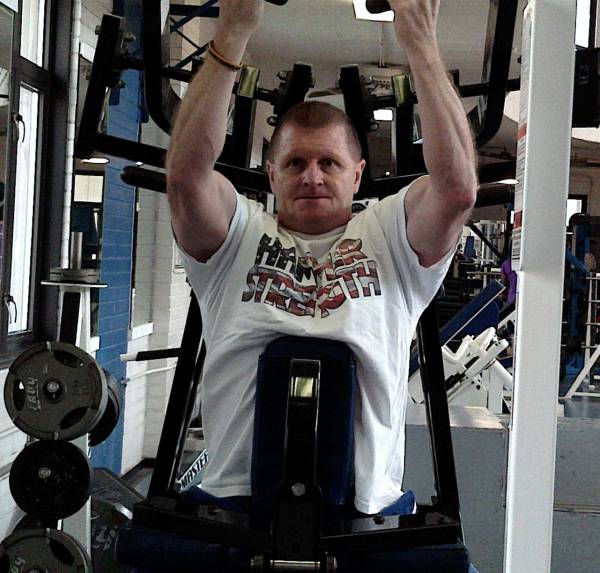
6. Use a reasonable volume of training.
As mentioned in point number 4 above, there is no need to perform a high volume of exercises per session. This holds true for exercise sets. A 1 to 3 sets / exercise protocol is within reason and should be the guiding rule to create muscle overload. It‘s effective, time-efficient, and also facilitates recovery because the body doesn’t have to deal with unnecessary stress bouts and energy depletion. Similarly, very intense training sessions require a few days to fully recover from, therefore two to three sessions per week should be the limit. If more people trained harder and took an extra day of recovery between these more intense sessions, there would be more muscle visible in the world.
7. Vary the number of repetitions.
Proper strength training should involve significant resistance to recruit and fatigue targeted muscle fibers. It is not advisable to perform hundreds of repetitions in an exercise set as the resistance needed for this would be too light and inadequate for creating muscle tension and overload. Because research is mixed on the exact number of repetitions needed for specific types of development (i.e., maximum strength, quick strength [explosion], increased muscle size, and extended force output [muscular endurance]), a wide range of repetitions can be used. A reasonable range of repetitions would be from four to twenty five, used systematically to enhance muscle capacity over the course of individual training period segments and the training year.
8. Vary exercises and workout day formats.
Proper strength training can be a grind due to its stressful nature, therefore to add variety to training, rotate exercises between workouts and alter the workout day formats throughout the training year. Examples: leg presses for workout A, barbell or machine squats for workout B, and dead lifts for workout C. Wide grip pulldowns for the upper back on workout 1, chin ups on workout 2, and close grip pulldowns on workout 3. Train ten weeks doing total body on Monday, upper body on Thursday, and lower body on Friday. For the next 8 weeks, switch to a total body workout every fourth day. Bottom line: use a variety of exercises and training day formats, but maintain consistency and progression.
9. Use sensible nutritional intake.
The good ole days of recommending fresh fruits, vegetables, low-fat proteins, complex carbohydrates, and adequate hydration seem to have been be lost as there are a gazillion ergogenic aids and supplements are on the market. All are purported to enhance some elusive quality, namely increased muscle mass, strength, energy and / or leanness. They cost money, but so do trips to the local supermarket to obtain regular food products which we all have to do anyway. No one wants to hear this because it‘s boring, but if a person eats sensibly – that is, eats balanced meals derived from the four food groups obtainable at the supermarket and gets enough calories to support whatever is desired (i.e., weight gain, loss, maintenance) — that in itself should be sufficient to reach their goal.
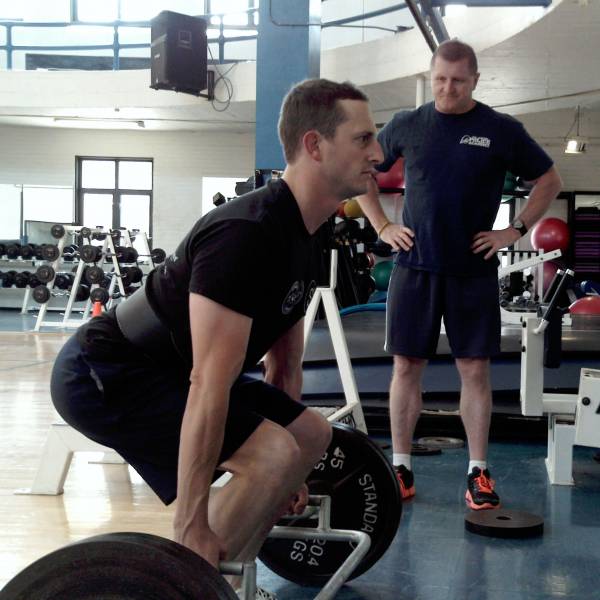
10. Accept your body type and genetic limitations.
Last but not least is the genetic issue. I saved this for the end purposely as it is the greatest reality check of them all: you‘re stuck with your body type and genetic endowment no matter how much you wish it could change. Forty years ago I was 5‘-9, weighed approximately 155 to 160 pounds, and could maybe do 185 pounds for 10 repetitions in the bench press before I started serious strength training. Twenty five years ago, I was 5‘-9, weighed approximately 193 to 197 pounds, and could do 225 pounds for 9 repetitions in the bench press due to hard, consistent, and progressive training. Currently, I‘m 5‘-9, weigh approximately 185 pounds, and can do 175 pounds for 10 repetitions due to the fact I‘m 60 years old and trying to hang on to continued consistent, progressive training. I hate to admit it, but I‘m on the down-side. My shoulder bone/ligament structure isn’t going to change, I‘m stuck with a 5‘-9 frame, but my body composition and strength levels can vary depending on how I train. My point is you‘re not going to make any major transformations in your strength and physique once you tap into your genetic potential. The key is to accept what you have and train intelligently within its confines.
TNT has over 35 years of combined fitness experience, so if you’re looking for a coach who can train you online from anywhere in the world, visit our online training page to book a consultation.
TNT wants you to maximize your strength as safely and efficiently as possible, so if you’re looking for a stand alone workout plan, check out our Blackjack training program.

















